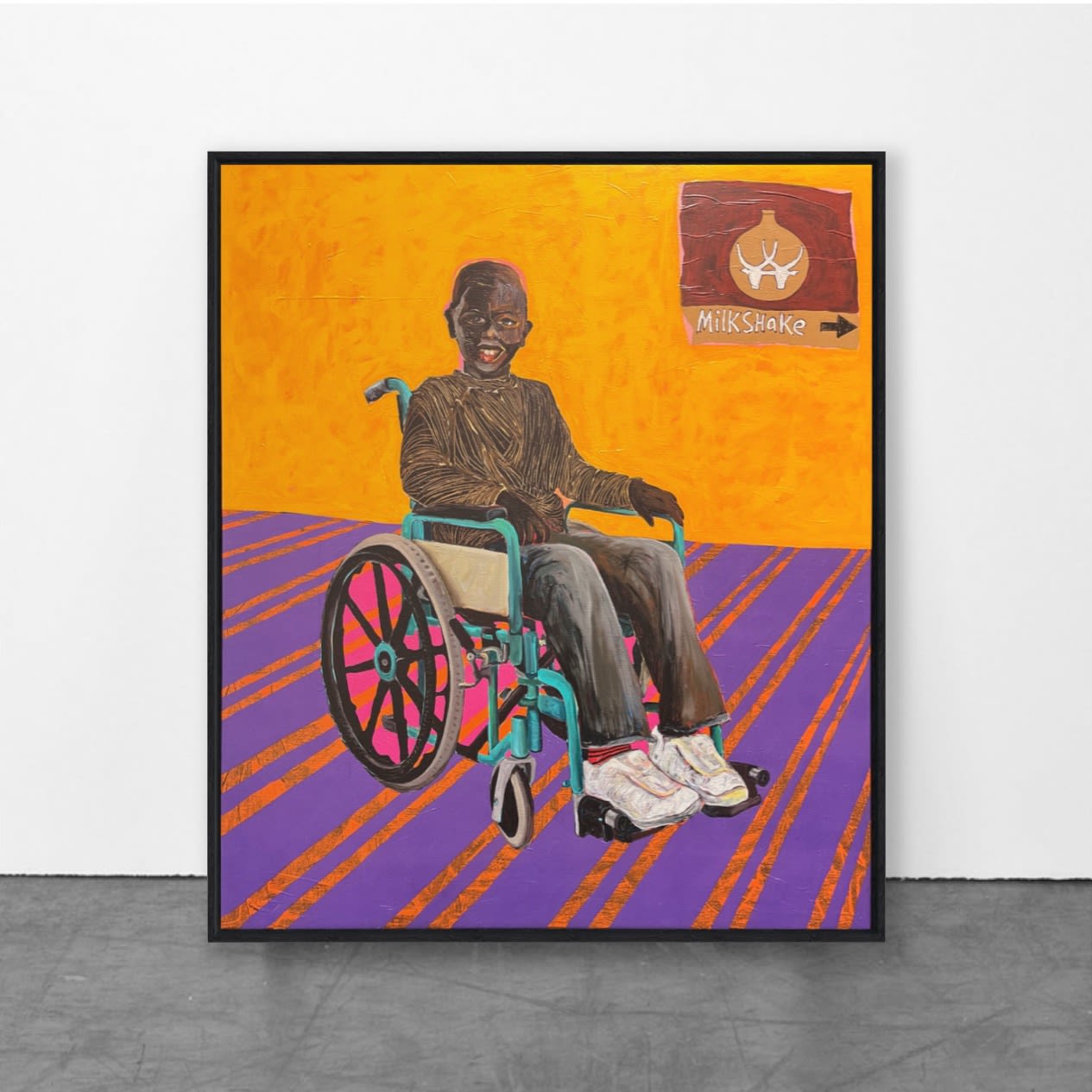
Ugandan-Rwandan Collin Sekajugo’s artistic practice examines and questions the notion of personal identity in a self-absorbed contemporaneity by re-imagining subjects from visual, oral and digital culture. Sekajugo named this approach “Sekadaidentism”, which is a combination of “Sekajugo” and the word “identity”. Since 2012, Sekajugo has worked with the manipulation of stock images – generic images created for creative or business purposes – to reveal their inherent biases of entitlement and privilege largely modelled on the Western self. By doing so, Sekajugo highlights a contemporaneous anthropological reversal of this mainstream culture through the lens of a decidedly African sense for irreverence and play on the ad-hoc. With "Stock Image 001 – Boy in Wheelchair", Sekajugo represents a stunning engagement with portraiture that utilises contextual materials to great effect. The barkcloth and acrylic gilds each canvas to begin from another foundation, while their titles link them into spheres of digital and historical reproduction. Conceptually, the works of Sekajugo are purely theatrical: they take over and re-invent identities in order to exposes some truths behind these stock images that quietly continue to colonise the entire globe by the weight of their own popularity. Sekajugo created "Stock Image 001 – Boy in Wheelchair" as part of a series made exclusively for the 59th Venice Biennale. It is currently exhibited in the first ever Ugandan pavilion of the renown international art exhibition. Note: The artwork will be offered framed.
“ I grew up seeing extreme poverty being the norm in most neighborhoods that were inhabited by regular Ugandans or Kenyans. And dependence on well-to-do families in terms of decision-making for community leadership or transformation gave me so many questions. I found art to be a perfect form of free expression for me. I have always had a strong desire to share knowledge and ideas with those who are underprivileged or disadvantaged. „
